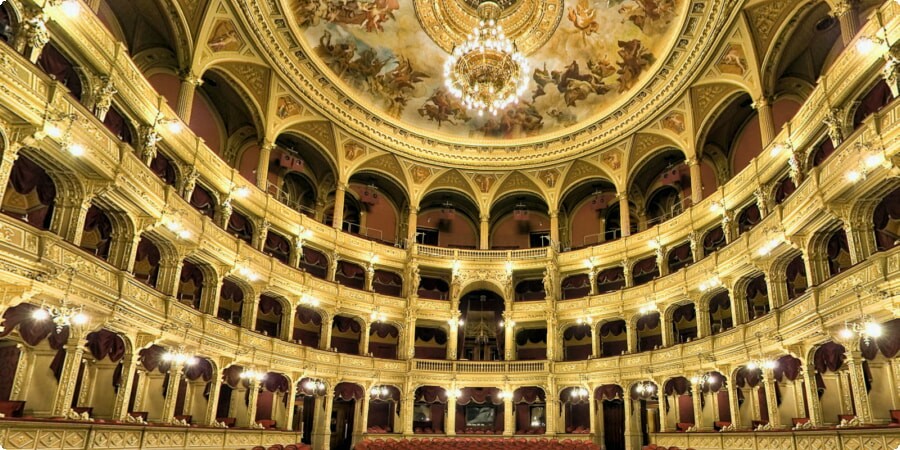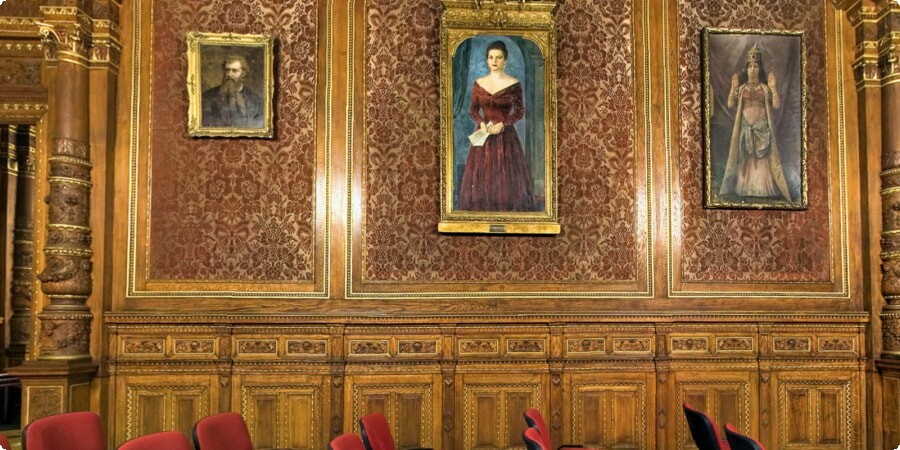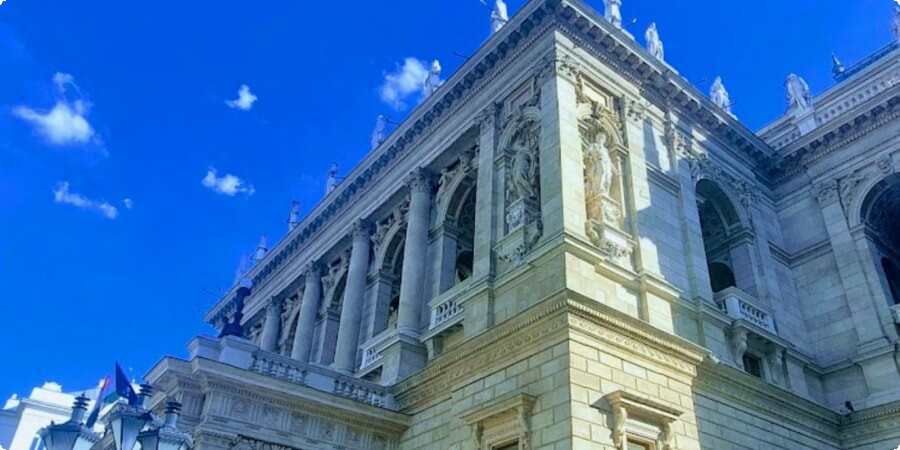Welcome to the enchanting world of Hungary's State Opera House, a cultural jewel nestled in the heart of Budapest. As you step into its opulent halls and immerse yourself in the grandeur of its performances, you are transported to a realm where music, art, and history intertwine in perfect harmony. Join us on a visual journey through the elegance and splendor of this iconic opera house, as we explore its rich heritage and artistic legacy.
Historical Background
To truly appreciate the majesty of Hungary's State Opera House, it's essential to understand its captivating history. The opera house's story begins in the late 19th century, a time of cultural flourishing and artistic renaissance in Budapest. With a burgeoning appetite for opera and ballet, Hungary's cultural elite envisioned a grand venue that would rival the finest opera houses of Europe.
In 1875, construction of the Hungarian State Opera House commenced under the direction of renowned architect Miklós Ybl. His vision was to create a masterpiece of architectural elegance, blending Renaissance and Baroque elements to stunning effect. However, tragedy struck during construction when Ybl passed away, leaving his protege, Ede Telcs, to oversee the completion of the opera house.
Despite the challenges, including financial setbacks and political turmoil, the Hungarian State Opera House finally opened its doors to the public in 1884, ushering in a new era of cultural sophistication in Budapest. Since then, it has remained a beacon of artistic excellence, hosting countless world-class performances and captivating audiences from around the globe.
Explore more about the history of Hungary's State Opera House on Wikipedia.

Architectural Splendor
Prepare to be dazzled by the architectural splendor of Hungary's State Opera House, a testament to the artistic genius of its creators. From its imposing façade to its lavish interiors, every aspect of the opera house exudes elegance and grandeur.
The opera house's exterior is a masterpiece of Neo-Renaissance design, featuring intricate carvings, majestic arches, and towering domes that command attention from passersby. As you approach the entrance, you'll be greeted by imposing statues of legendary composers and muses, setting the stage for the grandeur that lies within.
Step through the doors, and you'll find yourself in a world of breathtaking beauty. The opera house's interior is a symphony of marble, gold leaf, and velvet, with ornate chandeliers casting a warm glow over its opulent spaces. From the majestic main staircase to the sumptuous auditorium adorned with frescoes and gilded balconies, every detail is meticulously crafted to transport you to a bygone era of glamour and sophistication.
But perhaps the most striking feature of the Hungarian State Opera House is its stunning main auditorium, with its richly decorated ceiling, plush red seats, and magnificent horseshoe-shaped layout. It's here that the magic of the opera comes to life, as world-class performers take to the stage to dazzle audiences with their artistry and talent.
Get directions to Hungary's State Opera House on Google Maps.
Planning to explore Budapest and visit the State Opera House? Consider booking a car rental from Budapest Airport for convenient travel around the city. Click here to book your car rental with BookingAutos.

Artistic Embellishments
As you immerse yourself in the grandeur of Hungary's State Opera House, prepare to be captivated by its exquisite artistic embellishments. Every corner of the opera house is adorned with intricate details and ornate decorations, each one a testament to the talent and craftsmanship of its creators.
The opera house's interior is a veritable treasure trove of artistic delights, with stunning frescoes, intricate mosaics, and majestic sculptures adorning its walls and ceilings. From allegorical figures representing music and dance to scenes from beloved operas and ballets, every artwork tells a story and adds to the opera house's immersive ambiance.
One of the most iconic features of the Hungarian State Opera House is its breathtaking main auditorium, where even the ceiling is a work of art. Painted by renowned artist Károly Lotz, the ceiling depicts scenes from Greek mythology, including the muses and their divine inspiration to the arts. As you gaze up at the ceiling, you can't help but feel transported to another world, where beauty and creativity reign supreme.
But the artistic embellishments of the opera house extend beyond its walls and ceilings. The stage itself is a masterpiece of design, with elaborate sets, sumptuous costumes, and state-of-the-art lighting creating a feast for the senses. Whether you're attending a classic opera or a contemporary ballet, every performance at the Hungarian State Opera House is a visual spectacle to behold.
Opera House Rituals and Traditions
Attending a performance at Hungary's State Opera House is not just a cultural experience – it's a time-honored tradition steeped in rituals and customs that have been passed down through generations. From the moment you step through the doors, you become part of a rich tapestry of opera house etiquette and tradition that adds to the magic of the experience.
One of the most cherished traditions at the Hungarian State Opera House is the ritual of opening night. Before each performance, patrons gather in the opera house's grand foyer to mingle and socialize, dressed in their finest attire. As the lights dim and the orchestra begins to play, there's a palpable sense of excitement and anticipation in the air, as audiences eagerly await the start of the performance.

Throughout the evening, you'll notice other time-honored traditions, such as the applause that greets the conductor as they take the stage, or the standing ovations that follow particularly moving performances. And let's not forget the tradition of the curtain call, where performers return to the stage to take their bows and receive the adulation of the audience.
Attending a performance at Hungary's State Opera House is not just about enjoying world-class music and theater – it's about participating in a centuries-old tradition that celebrates the beauty and power of the performing arts.
Behind the Scenes
While the performances at Hungary's State Opera House may steal the spotlight, there's a whole world of activity happening behind the scenes that adds to the magic of the experience. From the costume designers and stagehands to the musicians and technicians, countless talented individuals work tirelessly to bring each production to life.
One of the most fascinating aspects of the opera house's behind-the-scenes operations is the costume and set design workshops, where skilled artisans create elaborate costumes and sets that transport audiences to distant lands and bygone eras. From period gowns to fantastical creatures, every costume is meticulously crafted to ensure both beauty and functionality on stage.
Another essential aspect of behind-the-scenes operations at the Hungarian State Opera House is rehearsal, where performers and musicians hone their craft and perfect their performances under the watchful eye of the director and conductor. It's here that the magic truly begins to take shape, as the vision of the production comes to life before your eyes.
But perhaps the most critical behind-the-scenes players are the stagehands and technicians, who work tirelessly to ensure that every performance runs smoothly. From lighting and sound cues to set changes and special effects, their expertise and dedication are essential to creating the immersive theatrical experience that audiences have come to expect from Hungary's State Opera House.
Planning to explore more of Hungary beyond Budapest? Consider booking a car rental to journey through the country's picturesque landscapes and historic towns. Click here to book your car rental with BookingAutos.

Visitor Experience
A visit to Hungary's State Opera House is an unforgettable experience that promises to delight the senses and ignite the imagination. Whether you're a seasoned opera enthusiast or a first-time visitor, there's something for everyone to enjoy within the hallowed halls of this cultural landmark.
Upon arrival, you'll be greeted by the opera house's magnificent façade, a testament to the grandeur and elegance that awaits inside. Before the performance begins, take some time to explore the opera house's opulent interiors, from the majestic main staircase to the plush red velvet seats of the auditorium.
For those interested in learning more about the opera house's history and architecture, guided tours are available, offering insight into its storied past and behind-the-scenes operations. Alternatively, simply soak in the atmosphere and excitement of a live performance, as world-class singers, dancers, and musicians take to the stage to transport you to another world.
With its rich history, breathtaking beauty, and world-class performances, a visit to Hungary's State Opera House is sure to leave a lasting impression on all who experience it.
Further Reading
Interested in learning more about Hungary's State Opera House and its cultural significance? Here are a few resources to help you delve deeper into this iconic landmark:
These resources offer a wealth of information on the history, architecture, and cultural significance of Hungary's State Opera House, as well as practical tips for planning your visit and exploring the opera house's many attractions.
Practical Information
Before you embark on your journey to Hungary's State Opera House, here are a few practical tips to help you make the most of your visit:
-
Booking Tickets: Tickets for performances at the State Opera House can be purchased online through the opera house's official website or at the box office. It's advisable to book tickets in advance, especially for popular performances and special events.
-
Dress Code: While there is no strict dress code for attending performances at the State Opera House, many patrons choose to dress elegantly for the occasion. Smart casual attire is generally appropriate, but you may opt for more formal attire for opening nights and gala events.
-
Arrival Time: Plan to arrive at the opera house at least 30 minutes before the performance begins to allow time for ticket collection and finding your seat. Latecomers may not be admitted until a suitable break in the performance.
-
Accessibility: The State Opera House is wheelchair accessible, with ramps and elevators available for visitors with mobility impairments. If you require special assistance during your visit, please contact the opera house in advance to make arrangements.
With these tips in mind, you're ready to embark on a memorable journey to Hungary's State Opera House, where music, art, and culture come together to create an unforgettable experience.